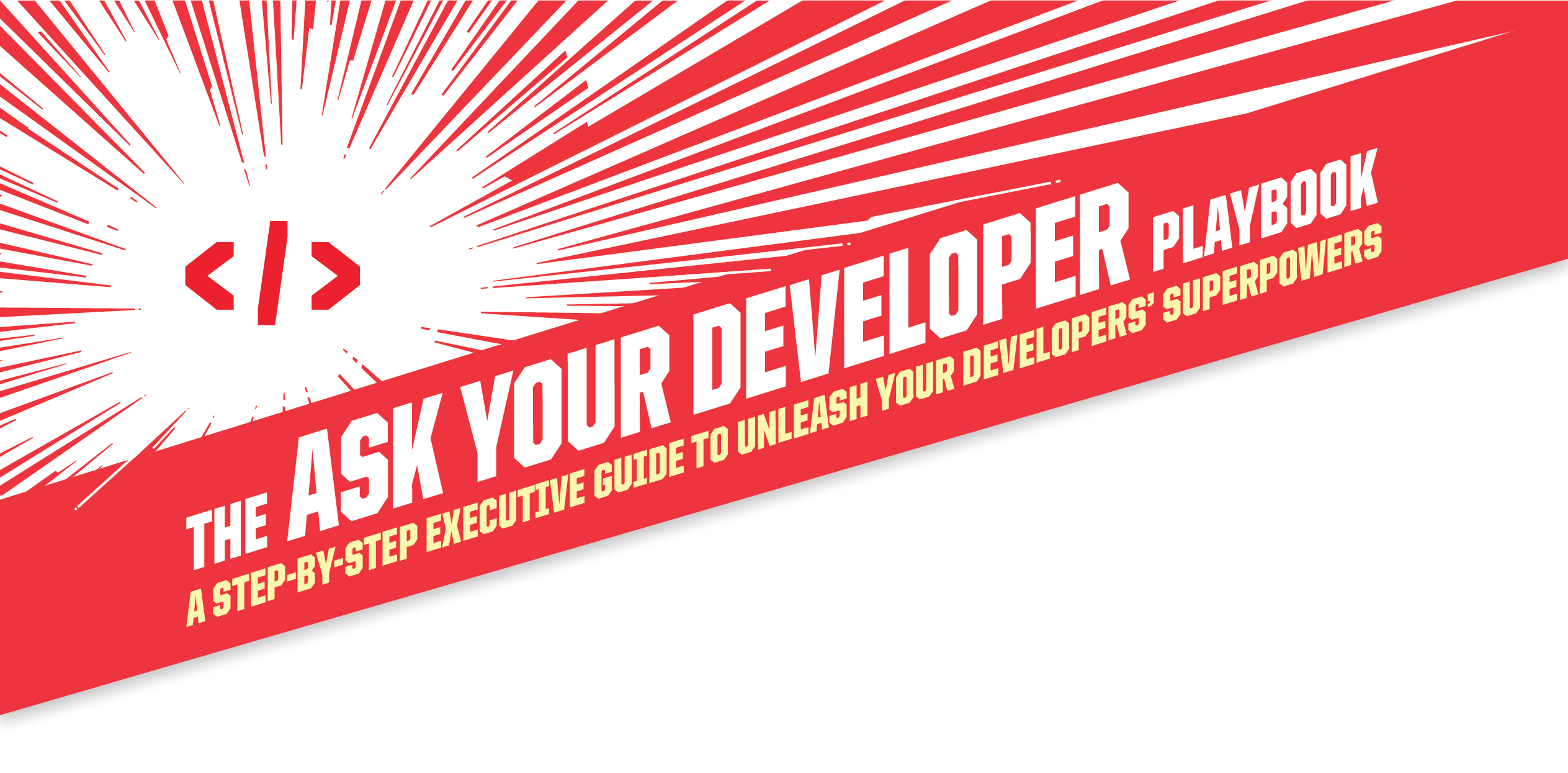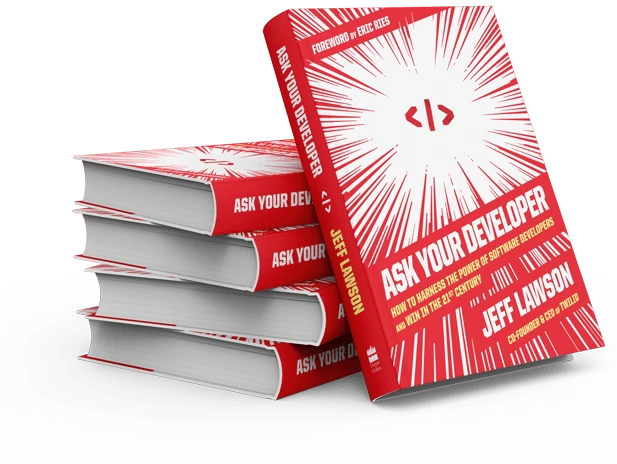
Personalize your playbook
Take a moment to reflect on your organization –– how your culture, business models, technology infrastructure, data architecture, and organizational structure intersect to impact innovation and transformation.
Based on the results of your self-assessment, we’ll share a personalized playbook, which features a summary of how organizations like yours approach transformation and actionable strategies to empower developers.
Take your self-assessment:
In each group, select the statement that best describes your organization.
We are fairly risk averse, and people are afraid of failure; failures are blamed on people
Risk taking happens occasionally; failures are mostly blamed on the process
Thoughtful risk-taking is encouraged; failures are celebrated as a learning experience
Take your self-assessment:
In each group, select the statement that best describes your organization.
Decisions come top down from leadership and teams are in charge of executing
Teams have specific guidelines for which decisions they can make
Leadership provides the high level plan and guidelines, but teams are empowered to make decisions and are accountable for the results
Take your self-assessment:
In each group, select the statement that best describes your organization.
Groups talk to each other primarily when required by leadership (e.g. formal planning)
We consistently engage in cross-organization planning and engagement
We frequently collaborate both internally and across the entire ecosystem
Take your self-assessment:
In each group, select the statement that best describes your organization.
Learning and development is left up to individual employees on their own time, with a lot of tribal knowledge but few best practices
Learning and development is an HR function, with annual requirements and dictated courses based on role, and best practices shared in silos
Our organization is an open learning environment that shares best practices and development happens on the job by doing (in addition to formal training)
Take your self-assessment:
In each group, select the statement that best describes your organization.
Data and customer insights are fragmented and siloed between various systems and/or groups
Data and customer insights are centralized on a common cloud-based platform
Data and customer insights are shared across our entire ecosystem (internally and externally)
Take your self-assessment:
In each group, select the statement that best describes your organization.
All our technology systems are rigid and on-premise; new products or features are released infrequently
Our technology systems are generally hybrid (on-premise and cloud); release cycles can be inconsistent
Our technology systems are primarily cloud based, supporting SAFe agile development and frequent releases
Take your self-assessment:
In each group, select the statement that best describes your organization.
We don’t have formal experimentation processes and experimentation efforts are viewed as peripheral
We have early experimentation with innovation (hackathons, digital factories, etc.), but not always aligned to business strategy
There is frequent experimentation with successes scaled into the broader business; most employees are engaged in these efforts
Take your self-assessment:
In each group, select the statement that best describes your organization.
New ideas (projects, services, ways of working) come from executives with the most seniority and authority
New ideas come from team or department leaders, or their peers in other departments
New ideas can come from any level of the company, or from our customers –– and are all given due respect
Take your self-assessment:
In each group, select the statement that best describes your organization.
Few employees understand human-centered design principles, and they are not embedded into our approach
Customer-facing groups like sales and marketing use journey maps, segmentation, ethnography and design-led principles
We approach everything through the lens of a customer’s “job to be done”
Take your self-assessment:
In each group, select the statement that best describes your organization.
We primarily compete on price, and are margin driven above all else
We see both price and customer experience as part of competitive advantage
We embrace customer experience as the basis of our competitive advantage, even if it impacts margins
Thanks for completing the assessment to personalize your playbook! Click below to get started.

About "Ask Your Developer"
Jeff Lawson, software developer turned CEO of Twilio, creates a new playbook for unleashing the full potential of software developers in any organization, showing how to help management utilize this coveted and valuable workforce to enable growth, solve a wide range of business problems, and drive digital transformation.
All proceeds of Ask Your Developer are going to organizations who are working to ensure that developers and technologists of the future reflect the diverse world around us. Learn about our four beneficiary organizations.